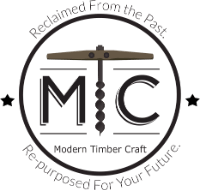
Reclaimed yellow pine wood flooring has gained popularity in recent years due to its unique characteristics and environmental sustainability. This type of flooring is made from repurposed yellow pine wood, salvaged from old buildings, barns, and warehouses, which you can read more about here. While it offers many benefits, it also has some drawbacks that homeowners should consider. In this article, we will explore the pros and cons of reclaimed yellow pine wood flooring.
Pros of Reclaimed Yellow Pine Wood Flooring:
Environmental Sustainability:
One of the most significant advantages of using reclaimed yellow pine wood flooring is its positive environmental impact. By repurposing old wood, we reduce the demand for new lumber, thereby conserving forests and minimizing deforestation. This eco-friendly approach helps preserve natural resources and contributes to a more sustainable future.
Unique Aesthetic Appeal:
Reclaimed yellow pine wood flooring carries a distinct charm and character. The wood's weathered appearance, including knots, grain patterns, and patina, adds a rustic and vintage feel to any space. Each piece of reclaimed wood tells a story and adds a sense of history and authenticity to your home's interior.
Durability:
Yellow pine is known for its exceptional durability, making it an excellent choice for flooring. Reclaimed yellow pine wood has already withstood the test of time, making it even more resilient. It has proven its strength by surviving decades of use in old structures, and when properly maintained, it can last for many more years.
Cost-effective:
While reclaimed yellow pine wood flooring can be more expensive than new lumber, it is often more affordable than other high-end hardwood flooring options. This is particularly true when considering the durability and longevity of the material. Investing in reclaimed wood flooring can provide long-term value and enhance the overall appeal of your home.

Cons of Reclaimed Yellow Pine Wood Flooring:
Limited Supply:
As the name suggests, reclaimed yellow pine wood is obtained from old structures. Therefore, its availability can be limited, and finding a sufficient quantity for larger projects can be challenging. This can lead to higher costs or the need to compromise on the desired specifications.
Surface Imperfections:
Due to its reclaimed nature, yellow pine wood flooring may have surface imperfections, such as nail holes, scratches, or discoloration. While these flaws contribute to its character, some homeowners may prefer a more uniform and pristine appearance, which can be difficult to achieve with reclaimed wood.
Maintenance Requirements:
Yellow pine wood flooring requires regular maintenance to retain its beauty and durability. It may need refinishing, sealing, or occasional repairs to address wear and tear. Homeowners should be prepared to invest time and effort in maintaining the flooring properly.
Inconsistent Quality:
Since reclaimed wood comes from different sources and ages, there can be variations in quality and stability. Some planks may be more susceptible to warping, cupping, or splitting. It is essential to carefully select and inspect each piece before installation to ensure a satisfactory outcome.
Conclusion:
Reclaimed yellow pine wood flooring offers a range of benefits, including environmental sustainability, unique aesthetics, durability, and cost-effectiveness. However, it can also present challenges, such as limited supply at times, surface imperfections, maintenance requirements, and inconsistent quality. Before choosing this type of flooring, homeowners should weigh these pros and cons against their preferences and needs. Consulting with professionals and understanding the specific characteristics of reclaimed yellow pine wood can help make an informed decision. Ultimately, the charm and story behind reclaimed yellow pine wood flooring make it a desirable choice for those seeking a distinct and eco-friendly flooring.


